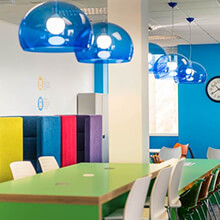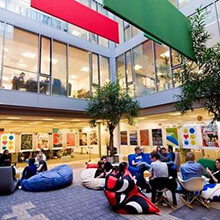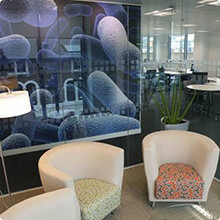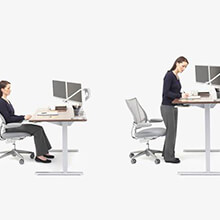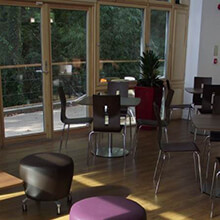- Contact 0870 350 7767
- |
- Advertise
Modern facilities management thinking views offices as a strategic asset.
 News and PR from Fresh Workspace Ltd - Published 16 October 2017
For most organisations the total operating cost of their property runs at between 10 and 20 per cent of their annual operating costs. By any measure, that is a significant proportion of expenditure.
News and PR from Fresh Workspace Ltd - Published 16 October 2017
For most organisations the total operating cost of their property runs at between 10 and 20 per cent of their annual operating costs. By any measure, that is a significant proportion of expenditure.With so many managers keen to encourage communication and with so much time spent in meetings, it is imperative that the use of meeting rooms is maximized.To gauge just how important this is, it is possible to create a typical organisation based on average statistics. So a firm with 350 employees which specifies two board and conference rooms (each of 30 m²), six team meeting rooms (18 m²) and 15 small meeting rooms (13 m²), plus a number of other public areas including break-out space, restaurants, receptions, clearly has a strong vested interest in making sure that this space is used as effectively as possible. Many contemporary organisations see themselves as learning organisations so shared space is essential and the proportion given over to it will be appropriately higher and will only continue to assume more importance over time.
Of course, the allocation of space is not just about cost. It is also about how to meet the needs of an increasingly mobile and flexible workforce. Research shows that workstations in many organisations are typically unoccupied for anywhere between 60 and 80 percent of the time. And while a large number of the occupants of those workstations may be off site the numbers that are probably attending meetings in-house are daunting. According to the Wharton Center for Applied Research, the average chief executive officer spends about 17 hours in meetings per week, while senior executives spend an average of 23 hours and middle managers 11 hours in meetings per week.
The changing work culture of these knowledge workers also means that they have been demanding more and more control over how and where they work. So much so that it is now the norm for people to expect autonomous control over their time and space. The conclusions are clear. We must provide an environment that makes financial sense for the organisation and which also serves the complex demands of the people who work for it. We must manage things better. We must make better use of the things we own.
Other announcements from Fresh Workspace Ltd
-
The wellness agenda has evolved into a core pillar of real estate strategy.
Changing workplace strategies confirm importance of wellness, technology and productivity.
16 Apr 2018
-
Wellbeing and productivity of employees.
Environmentally friendly buildings help you to sleep better and work more productively.
19 Feb 2018
-
Shedding some daylight on one of the most important aspects of office design
One of the most underappreciated and least talked about aspects of a productive workplace design is not only completely free, we enjoy a limitless supply of it.
17 Jan 2018
-
A feeling of togetherness is essential, so why would we kill off the office?
It is still depressingly commonplace to read proclamations of the death of the office.
05 Oct 2017
-
How to decide on the best type of office fit out for you
It is essential to choose a specialist office fit out company that can deliver a wide range of office design and fit out solutions including Category A and B design and build solutions.
04 Oct 2017
-
Workplace design reflects our changing relationship with work and society
Of all the things we buy with the exception of our clothes, furniture is the most intimate, the one we spend most time in contact with.
23 Aug 2017
-
Successful flexible working is built on the foundations of great office design
In May, the Wall Street Journal reported IBM had announced it was obliging a significant number of its staff to give up on remote working and move back to corporate offices, many of them regional hubs
27 Jul 2017
-
Good ergonomics is about moving and standing as well as sitting
Although the idea has been around for a long time, workplace ergonomics first came to prominence in the wake of the intensive growth in the use of computers.
29 Jun 2017
-
Intelligent office design & fit-out can help facilities managers harness change
The workplace revolution we foresaw twenty odd years ago was supposed to have eradicated some of the oldest challenges known to facilities managers.
27 Apr 2017






